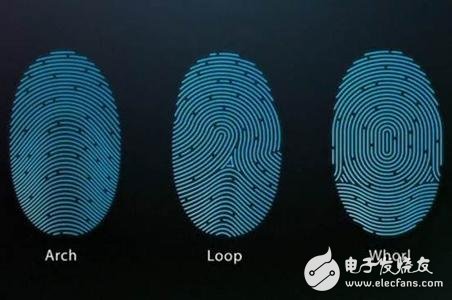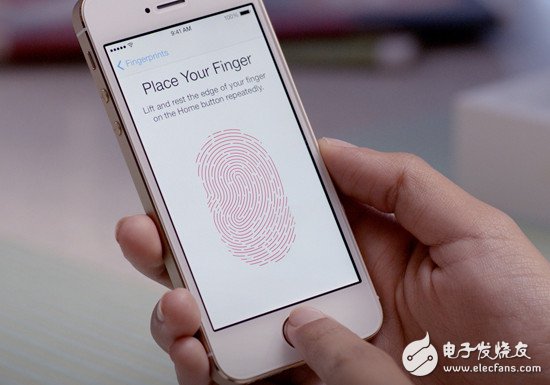As early as the early 1980s, China began to enter the field of biometrics. With the mastery of its core technology, industrial development is relatively mature. According to statistics, the global biometrics market will grow at a compound annual growth rate of 35.2% in the next five years, and the market size will reach 37 billion US dollars. According to our model calculation, the biometric market based on fingerprint recognition, face recognition, and iris recognition “troika†is expected to reach US$37.02 billion in 2018 and a compound growth rate of 35.2% in 2013~2018.
In terms of structure, the driving force of fingerprint recognition and iris recognition mainly comes from the outbreak of the smart terminal application market. The driving force of face recognition mainly comes from the demand increase in the public security market. Face recognition and iris recognition, due to their strong base burst, will increase their share of the entire biometric market from 11.4% and 5.1% in 2013 to 22.4% and 22.1% in 2018. As a country with a large population, the potential market space for biometric identification is accelerating, driven by multiple factors such as information security needs, public security needs, and biometrics standardization.

Maximum fingerprint recognition potential
Fingerprint development is based on its uniqueness and security advantages, compared to passwords and proximity cards. Fingerprint identification products are by far the most convenient, reliable and cheapest biometric products and thus the first choice for most SMEs. At present, the sales volume of fingerprint attendance products in the Chinese market accounts for more than 40% of the total sales of biometric products, ranking first. It is reflected from the side that the popularity of fingerprint recognition technology is the highest, and fingerprint recognition has gradually become the standard for portable devices.
With the launch of the Apple Fingerprint Identification System, major mobile phone manufacturers have also added fingerprint recognition systems. In terms of the annual growth rate of global smartphones, the market space is sufficient. According to the IDC report, global smartphone shipments in 2013 were approximately 1.004 billion units, and will exceed 1.8 billion units by 2017, with a compound growth rate of 16%. According to Gartner's forecast, global flat-panel shipments will reach 300 million in 14 years, and it is expected to reach 400 million in 17 years, with a compound annual growth rate of 10%. Assume that the penetration rate of fingerprint recognition in smart terminals is 13%, 23%, 40%, and 50% in 14~17 years. The profit and loss of the single chip used to realize the fingerprint recognition function of mobile phones is expected to be 4/4/3/3 yuan in 14-17 years. Then the market profit of the entire fingerprint identification chip will increase from 434 million yuan in 13 years to 3.332 billion yuan in 17 years, with a compound annual growth rate of 66%.

IC manufacturers compete to seize the market
Chip suppliers at home and abroad have started to grab big orders. Following the industry's international giant SynapTIcs took the lead in grabbing orders for Samsung Electronics' mobile phone chips. Recently, the IC design industry's fingerprint identification chip order battle is also comprehensive. At the start of the game, the mainland chip manufacturers Huidingke and Si Liwei have already taken orders for Meizu, Huawei and ZTE mobile phone chips respectively. As for Taiwanese manufacturers, they are still waiting for good news from customers.
Taiwan's fingerprint identification chip factory pointed out that after Apple introduced the iPhone5S with fingerprint recognition function, the Android camp mobile phone brand factory has been looking for a better fingerprint identification chip solution, and actively develop related application software and App, especially The new generation of iPad will also follow up with the fingerprint recognition function, which will force the Android camp mobile phone brand factory to accelerate its pace, and hope to add its Android series products to the fingerprint recognition function as soon as possible.
At present, domestic and foreign chip suppliers continue to speed up the development of fingerprint identification products, and even the industry has formed alliances with each other to fully attack market opportunities. For example, Elan has cooperated with Xingyou, and Duntai has also found IDEX, a fingerprint identification manufacturer, to strengthen its own home. The fingerprint identification chip solution is expected to enter the mass production with customers in the first half of 2015.
Fingerprint recognition is expected to take root in the Internet of Things market
SynapTIcs has always been an important brand in the touch field, and the company has been looking for ways to improve touch technology in various fields. SynapTIcs CEO Bergman said that from the fourth quarter of 2014, there will be more Smart watches that use SynapTIcs touch ICs are available, but the proportion of smart watch touch products in the company is still unclear. In fact, Google Glass is the touch IC technology that uses Synaptics.
However, compared to smartphones and tablets, the biggest challenge of the watch is that the touch area is too small, so the range and function of the watch can be limited. Synaptics may also develop some 3D suitable for smart watches. Touch technology (using gestures), such as placing a finger on a specific periphery of the watch, can activate some special features of the watch.
In the face of the upcoming problems of the Internet of Things, Bergman said that the company has close cooperation with panel factories including Chi Mei (in fact, there are many important panel factories in Asia, and Synaptics attaches importance to Asia), so they are confident It is said that as long as the panel factory selected by the IoT product manufacturers, most of them should choose the Synaptics solution.
With the development and production of many fingerprint identification products, the application of fingerprint recognition technology has begun to enter the civilian market, which has become the core lineup of biometric identification. It is believed that the popularization and application of this technology is just around the corner.
For the 22kV Oil Immersed Power Transformer, we can produce capacity upto 420MVA. We use the best quality of raw material and advance design software to provide low noise, low losses, low partial discharge and high short-circuit impedance for power transformer.
Our power transformer are widely used in national grid, city grid, rural grid, power plant, industrial and mining enterprise, and petrochemical industry.
220Kv Transformer,220Kv Power Transformer,High Quality Power Transformer,Oil Immersed Transformer
Hangzhou Qiantang River Electric Group Co., Ltd.(QRE) , https://www.qretransformer.com